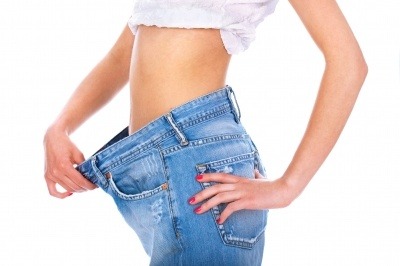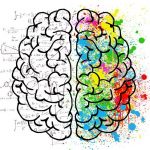
Chitosan is a popular and oft-promoted dietary fibre often used to remedy or even prevent dietary fat absorption as a means for controlling weight. It is a cationic polysaccharide produced by deacetylation which involves the hydrolysis of the N-acetyl-D-glucosamine units of a biopolymer called chitin. Chitin is derived from the cuticles of crustaceans such as shrimp, prawns, crab, and lobster (Schiller et al., 2001), or from the cell walls of mushrooms (Mesa Ospina et al., 2015), and Aspergillus niger and is usually regarded as a major waste or by product.
The properties of chitosan are similar to cellulose (Pittler et al., 1999). It is not hydrolysable but differs from other fibres as contains a prominent amino group (Kanauchi et al., 1995). Chitosan’s cationicity is due to the non-acetylated amines of the polyglucosamine residues that make up the polymer chains [Muzzarelli, 1977]. Due to its cationic nature, chitosan binds to negatively charged lipids, hence reducing their gastrointestinal uptake and thus potentially lowering serum cholesterol (Mhurchu et al., 2004).
Weight Management Studies
Several lines of evidence from pre-clinical (Nauss et al, 1983; Vahouny et al, 1983, 1988; Sugano et al, 1980; Nagyvary et al, 1979; Omrod et al, 1998) and clinical studies (Maezaki et al, 1993) have shown that feeding with oral chitosan might help to reduce body weight.
Double-blind, randomized, placebo-controlled trials indicated that body weight could be reduced when given in addition to hypocaloric diets for four weeks (Colombo & Sciutto, 1996; Veneroni et al, 1996; Macchi, 1996; Giustina & Ventura, 1995; Sciutto & Colombo, 1995). Statistical pooling of the results from these studies all supplying a diet of 1000 to 1200 kcal/d, suggested a mean body weight reduction by an extra 3.3 kg in the intervention (chitosan) group compared with a placebo (Ernst & Pittler, 1998).
More recent trials examining the effect of chitosan have produced more variable results. Some trials have reported a positive effect on body weight, (Schiller et al., 2001, Zahorska-Markiewicz et al., 2002, Girola et al., 1996) or lipid levels, Wuolijoki et al., 1999; Bokura and Kobayashi, 2003) while others have reported no effect on either outcome (Ho et al., 1999; Pittler et al., 1999).

Chitosan has now been incorporated as a major constituent into several over-the-counter remedies for overweight and obesity available in the USA and other countries. However, its clinical effectiveness for this condition remains disputed. It is viewed as an alternative material to Orlistat®.
The latest study conducted by the Ethicare Clinical Trial Services in Ahmedabad (India) and KitoZyme (Belgium) has demonstrated that ingestion of 2.5g/day of KitoZyme’s Kinutrime-CsG was linked with a mean body weight loss of up to 3 kg over 90 days, compared to close to 0.3 kg in the placebo group.
References
Bokura, H., Kobayashi, S. (2003) Chitosan decreases total cholesterol in women: a randomized, double-blind, placebo-controlled trial. Eur. J. Clin. Nutr. 57: pp. 721–725.
Colombo, P. & Sciutto, A.M. (1996): Nutritional aspects of chitosan employment in hypocaloric diet. Acta. Toxicol. Therap. 17, pp. 278 – 302.
Ernst, E. & Pittler, M.H. (1998) A meta analysis of chitosan for body weight reduction. Perfusion 11, pp. 461 – 465
Girola, M., De Bernardi, M., Contos, S., Tripodi, S., Ventura, P., Guarino, C., Marletta, M. (1996) Dose effect in lipid-lowering activity of new dietary integrator (chitosan, garcinia cambogia extract and chrome). Acta Toxicol. Ther. 17 pp. 25–40.
Giustina, A. & Ventura, P. (1995): Weight-reducing regimens in obese subjects: effects of a new dietary fibre integrator. Acta. Toxicol. Therap. 16, pp. 199 – 214.
Ho, S.C., Tai, E.S., Eng, P.H.K., Tan, C.E., Fok, A.C.K. (2001) In the absence of dietary surveillance, Chitosan does not reduce plasma lipids or obesity in hypercholesterolaemic obese Asian subjects. Sing. Med. J. 42: pp. 6–10.
Kanauchi, O., Deuchi, K., Imasato, Y., Shizukuishi, M. & Kobayashi, E. (1995) Mechanism for the inhibition of fat digestion by chitosan and for the synergistic effect of ascorbate. Biosci. Biotech. Biochem. 59, pp. 786 – 790.
Macchi, G. (1996): A new approach to the treatment of obesity: chitosan’s effects on body weight reduction and plasma cholesterol levels. Acta. Toxicol. Therap. 17, pp. 303 – 320.
Maezaki, Y., Tsuji, K., Nakagawa, Y. et al (1993): Hypocholesterolemic effect of chitosan in adult males. Biosci. Biochem. Biotech. 57, pp. 1439 – 1444.
Mesa Ospina, N., Ospina Alvarez, S.P., Escobar Sierra, D.M., Rojas Vahos, D.F., Zapata Ocampo, P.A., Ossa Orozco, C.P. (2015) Isolation of chitosan from Ganoderma lucidum mushroom for biomedical applications. J. Mater. Sci. Mater. Med. 26(3) pp. 135. doi: 110.1007/s10856-10015-15461-z. Epub 12015 Feb 10826.
Mhurchu, C.N., Poppitt, S.D., McGill, A.T., Leahy, F.E., Bennett, D.A., Lin, R.B., et al. (2004) The effect of the dietary supplement, Chitosan, on body weight: a randomised controlled trial in 250 overweight and obese adults. Int. J. Obes. Relat. Metab. Disord. 28(9) pp. 1149–56.
Muzzarelli, R.A.A. (1977) Chitin. Oxford, England: Pergamon Press.
Nagyvary, J.J., Falk, J.D., Hill, M.L., Schmidt, M.L., Wilkins, A.K. & Bradbury, E.L. (1979): The hypolipidemic activity of chitosan and other polysaccharides in rats. Nutr. Rept. Int. 20, pp. 677 – 684.
Nauss, J.L., Thompson, J.L. & Nagyuvary, J. (1983): The binding of micellar lipids to Chitosan. Lipids 18, pp. 714 – 719.
Omrod, D.J., Holmes, C.C. & Miller, T.E. (1998): Dietary chitosan inhibits hypercholesterolaemia and atherogenesis in the apolipoprotein E-deficient mouse model of atherosclerosis. Atherosclerosis 138, pp. 329 – 334.
Pittler, M.H., Abbot, N.C., Harkness, E.F., Ernst, E. (1999) Randomized, double-blind trial of chitosan for body weight reduction. Eur. J. Clin. Nutr. 53(5) pp. 379–81.
Schiller, R.N., Barrager, E., Schauss, A.G., Nichols, E.J. (2001) A randomized, double-blind, placebo-controlled study examining the effects of a rapidly soluble Chitosan dietary supplement on weight loss and body composition in overweight and mildly obese individuals. J. Am. Nutraceut. Assoc. 4 pp. 42–49.
Sciutto, A.M. & Colombo, P. (1995): Lipid-lowering effect of chitosan dietary integrator and hypocaloric diet in obese patients. Acta. Toxicol. Therap. 16, pp. 215 – 230.
Sugano, M., Fujikawa, T., Hiratsuji, Y., Nakashima, K., Fukuda, N. & Hasegawa, Y. (1980): A novel use of chitosan as a hypocholesterolemic agent in rats. Am. J. Clin. Nutr. 33, pp. 787 – 793.
Vahouny, G.V., Satgchithanandam, S., Cassidy, M.M., Lightfoot, F.B. & Fzirda, I. (1983): Comparative effects of chitosan and cholestyramine on lymphatic absorption of lipids in the rat. Am. J. Clin. Nutr. 38, pp. 278 – 284.
Vahouny, G.V., Satchithanandam, S., Cen, I. et al (1988 ): Dietary fibre and intestinal adaption: effects on lipid absorption and lymphatic transport in the rat 1 – 3. Am. J. Clin. Nutr. 47, pp. 201 – 206.
Veneroni, G., Veneroni, F., Contos, S., Tripodi, S., de Bernardi, M., Guarino, C. & Marleti, A.M. (1996): Effect of a new chitosan dietary integrator and hypocaloric diet on hyperlipidemia and overweight in obese patients. Acta. Toxicol. Therap. 17, 53 – 70
Wuolijoki, E., Hirvela, T., Ylitalo, P. (1999) Decrease in serum LDL cholesterol with microcrystalline Chitosan. Methods Findings in Exp. Clin. Pharmacol. 21 pp. 357–361.
Zahorska-Markiewicz, B., Krotkiewski, M., Olszanecka-Glinianowicz, M., Zurakowski, A. (2002) Effect of chitosan in the complex treatment of obesity. Polish Med. J. 74 pp. 129–132



Leave a Reply